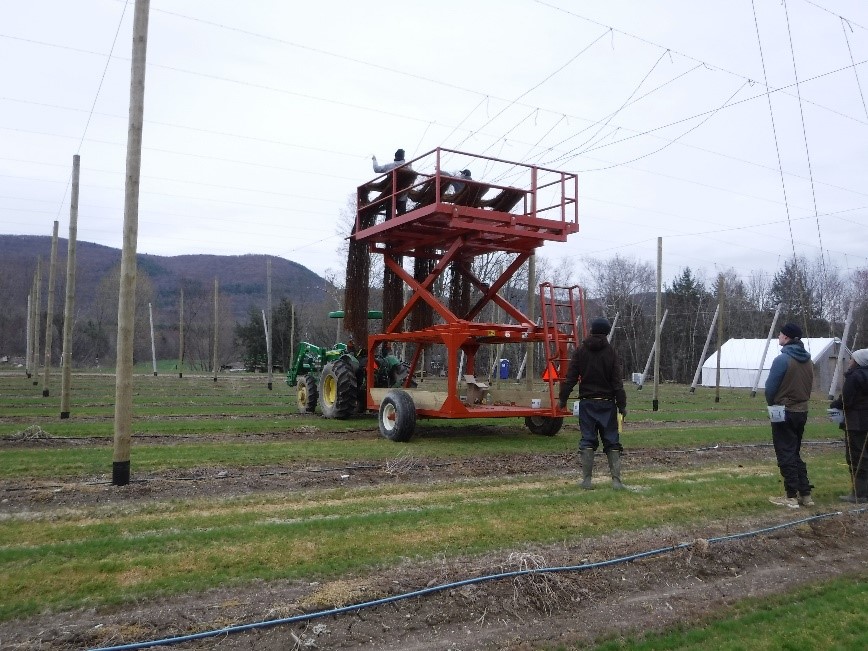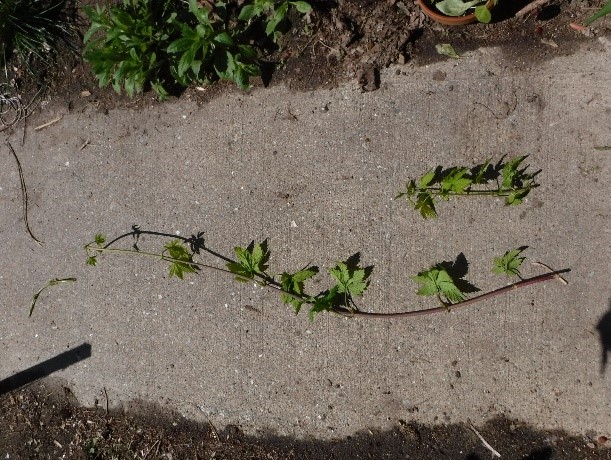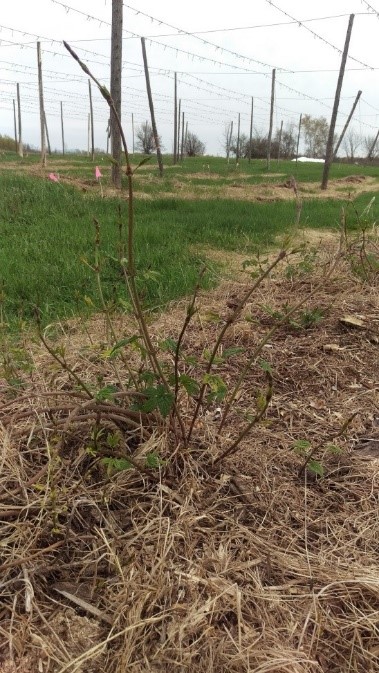Stringing often starts in April for many farmers in the Northeast. Stringing consists of tying coir twine to the top supporting wire of the hop trellis and stapling the bottom of twine into the ground next to the hop plant. Depending on trellising style and setup, 1-4 strings will be run to each crown, though we typically see two in many yards. The strings are inserted into the ground and held in with “W” clips using an insertion tool. This will provide the bines with a means to grow to the top wire in the upcoming season.

In commercial hop yards, training dates are determined by cultivar growth in the spring. Depending on whether a cultivar matures early, mid-season, or late, there is typically a particular range of days for those plants to start their upward growth. Getting the bines off the ground is also important for managing downy mildew and other potential disease issues.
Training dates from 2013-2018, Alburgh, VT.
| Year | Date |
| 2013 | 20-May to 27-May |
| 2014 | 19-May to 30-May |
| 2015 | 20-May to 26-May |
| 2016 | 24-May to 25-May |
| 2017 | N/A |
| 2018 | 22-May to 23-May |
Training is the process of wrapping shoots around the twine in a clockwise motion. Three to five shoots are selected from the crown to be wrapped around the twine. This process can be time consuming and will play a major role in subsequent plant growth and yield. Choose healthy, vigorous shoots for training that are 2-3’ in length, but avoid training bull shoots. Bull shoots are characterized by having greater internode spacing, hollow stems, and are often purple in color. These shoots will be less productive and more brittle in the wind. The bull shoots do not yield well and should not be trained. Think about leaving some shoots as backups during training.

In general, early harvested hops will have higher yields when trained earlier, whereas late harvested hop will have higher yields if trained later. We look to start training by mid to late May for our early maturing varieties but postponing another week can be beneficial for late maturing varieties depending on growing conditions. In the Northeast, training dates for farmers may fall between mid-May and early-June. We recommend that you make your own observations of hop maturity for each variety and keep detailed records of training dates for your region.
